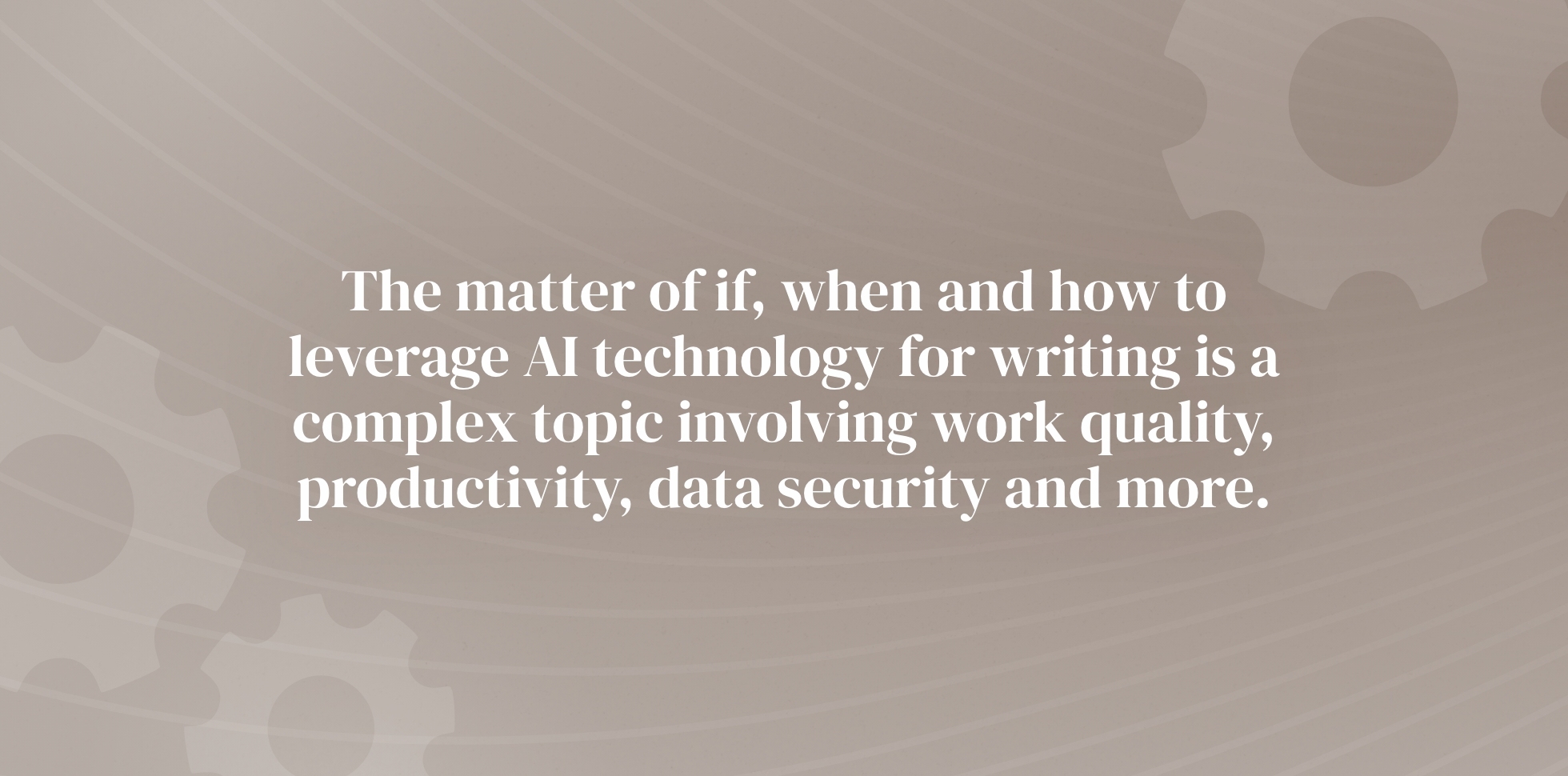On the other hand, AI writing tools rely on existing data and works by other AI writing tools or human writers to generate content. This means that using AI writing tools increases the probability that the content output will lack originality or uniqueness. In fact, brands that rely too much on AI risk becoming indistinguishable from their competitors. Not only that, but AI writing tools can easily generate plagiarized content from other sources — and the plagiarized content may not be easy to catch until it’s too late. Talk about a legal can of worms.
This doesn’t mean that AI writing tools are ineffective during the brainstorming and experimentation stages. But if we shift too much of the responsibility of storytelling from humans to AI, we risk commoditizing our brand.
AI writing tools may struggle to understand your target audience.
Brands that understand their audience and can address their unique needs will always win over the competition. On the other hand, nothing will resonate unless it springs from an understanding of the target audience’s mindsets, motivations, media habits and media consumption. The audience is key to everything we do, and it isn’t as simple as baseline demographics: Marketers have to synthesize a wealth of sources in order to know how to get the audience’s attention and drive meaningful engagement.
HubSpot claims that its content assistant, powered by OpenAI and released in March 2023, can help marketers “not only streamline busywork, but elevate the quality of the work they love.” Yet as the company said in a 2015 blog post, “it’s much harder to create compelling content marketing if you don’t know why it would be compelling to your audience in the first place.” That’s where a complete understanding of the brand and its audience(s) becomes crucial. Such knowledge is not readily available and is often proprietary.
To test the ability of the HubSpot content assistant to cover a common topic, I prompted it to “write an engaging email about a guide that includes tips for creating blog content that gets results.” Here’s what I got:
Hero Article Title
Hero article description here
Dear [Name],
Are you tired of spending hours crafting blog content that seems to fall flat? Do you want to learn the secrets to creating blog posts that actually get results? Look no further! Our new guide is here to help you become a blogging superstar. Packed with expert tips and strategies, this guide will teach you how to craft compelling content that engages your readers and drives them to take action. From headline writing to keyword optimization, we cover it all. Don’t miss out on this opportunity to take your blog to the next level. Read More to get your hands on our ultimate guide to creating blog content that gets results.
This draft gave me a few thought-starters. However, armed only with my basic prompt, the AI tool skipped the heavy lifting of analyzing and developing a complete understanding of my customer, their challenge and what made my brand uniquely positioned to provide a solution.
AI writing tools cannot mimic your unique brand voice.
HubSpot’s content assistant can’t simulate the knowledge of an insights team, but can it capture your brand’s voice? The AI tool can generate assets from prompts, and it can also update those assets. So, I asked the assistant to improve on the email it had just written for me. I highlighted “help you become a blogging superstar” and brought up the options to change the tone.
Friendly
Professional
Witty
Heartfelt
Educational
I selected “friendly,” and — voila! — that piece of text became “help you become a blogging sensation.”
That’s a stretch. It’s a little like using a thesaurus without understanding who you’re talking to or what you want them to do. Consider, for example, that thesaurus.com lists “affectionate” as a synonym for “friendly.” But the nuances of human language are such that those two words could send a totally different message depending on the audience and the context.
It was just one exercise, but I walked away thinking this: While helpful in experimentation and to jog the brain when it’s suffering from writer’s block, don’t mistake HubSpot’s content assistant for a do-it-all wunderkind. We will always need creative and strategic thinkers to conceive and protect brand voice as well as emotion, timeliness and novel perspectives.
(In fairness to the folks at HubSpot, they acknowledged that they are NOT relying heavily on AI to generate content. Instead, they edit the output for voice and other considerations and conduct follow-up research to ensure accuracy. They also acknowledge that AI tools are more useful for help with basic tasks.)
Privacy should be a big consideration for brands using AI.
AI content writing tools rely on users to feed their ML algorithms and constantly improve and strengthen their outputs. Some, such as OpenAI, assume ownership of the inputs they receive. While this may help AI tools become more effective over time, brands should be cautious about the information shared within their prompts, as this is used to train the tool — and sensitive information may be shared with other users.
AI writing tools are inherently biased.
Going back to ML and how computers are trained, AI content writing tools depend on the data they are trained on. This can create biases in the outputs of AI writing tools — biases that experienced, skilled human writers are able to detect and avoid.
Will AI replace human content writers?
The short answer? No. We live in a world of misinformation, and because AI tools are not consistently factual, there will continue to be an increased need for humans to draw on personal experiences and knowledge to fact-check content that is published for their brand.
Not only that, but a people-first approach to content that demonstrates E-E-A-T (experience, expertise, authority and trustworthiness) is becoming more important than ever and should be a key focus for content marketers. AI-generated content is less likely to succeed at E-E-A-T and SEO, because search engines prioritize content based on a level of experience and expertise that generative AI simply can’t replicate.
At the end of the day, the best communicators understand the nuances of human psychology better than any machine, because they live that human experience every day.
Finding the Right Balance of Human–AI Collaboration for Content Creation
There’s no denying that AI is here to stay, and it would be foolish to completely dismiss the aid of AI tools for writing content. Instead, we must make sure we select the right AI tools and use them appropriately, in a way that amplifies the skills and ideas we already have. We must also be willing to recognize the shortcomings of AI tools as well as their virtues.
Since the Stone Age, humans have used tools to make their work more efficient. And in this Age of AI, we have an enormous responsibility to do it thoughtfully.




